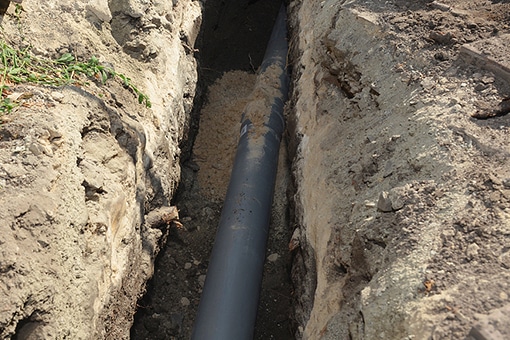5 Common Sewer Line Issues
Sewage problems create nightmare scenarios for homeowners. Not only are they hard to get to, but they can also cost a lot of money. Whether you’re a homeowner facing challenges or you’re buying a new home, a sewer line inspection uncovers the underlying root causes and makes you aware of the issues. Then, you can determine how to address them. Step By Step Inspections sees wide-ranging sewer line issues, five of which stand out from the rest.

1. Sewer Line Damage and Corrosion
Older homes with non-PVC pipes carry the greatest risk of damage and corrosion. Over time, the pipes begin to break down, which restricts the flow of wastewater. In addition to time, freeze and thaw cycles and settling of the home may play a role in their breakdown. As a result, dirt and debris can invade sewer lines and contribute to the escalating problem. Drain clogs, backups, and an obviously unpleasant smell of sewage in your basement or yard can all represent signs of sewer line corrosion or damage.
2. Tree Roots
Once a property reaches 20 years old, nearby trees have sufficiently grown their root systems to the point that they can impact sewer lines and ground pipes. Tree roots stretch out wide and cover much territory, eventually making their way to your lines. If the sewer lines are corroded, infiltration easily occurs. Even without corrosion, though, tree roots can be strong enough to puncture the mainline. Left unaddressed, they result in partial or full blockage. Video inspections remain the most effective way to identify underground issues such as this.
3. Toilets
Bathroom drains effectively remove human waste and toilet paper. They don’t effectively remove feminine hygiene products, paper towels, hair, or facial tissues, among other things. When people use their toilets as trashcans, problems loom on the horizon. At the very least, blockages can and do occur. At worst, clogs left unattended can result in damage and corrosion.
4. Grease or Food Buildup
In addition to toilets, some people use their garbage disposals as a substitute trashcan. Unfortunately, with a width of four inches or less, sewer lines can’t effectively transfer grease (which solidifies), eggshells, bones, and even starchy foods. Some of these items may seem obvious while others may cause you to grimace as you learn how many things shouldn’t go down the garbage disposal.
5. Rodents and Insects
Interestingly, another potential source of sewer line issues is rodents and insects. An adult rat can travel through the pipes from the city to your home. Even more, they can squeeze through very small openings. If you don’t know, rodents—especially rats—are disease vectors. Pesky insects, such as cockroaches and sewer flies, also make their way through pipes and can be a source of health issues.
Don’t let unanticipated sewer line issues catch you off guard. Our video inspections uncover any hidden dangers. If you live in or around Charleston, South Carolina, and need a sewer line inspection, call Step by Step at (843) 870-8726 or get an instant quote online.